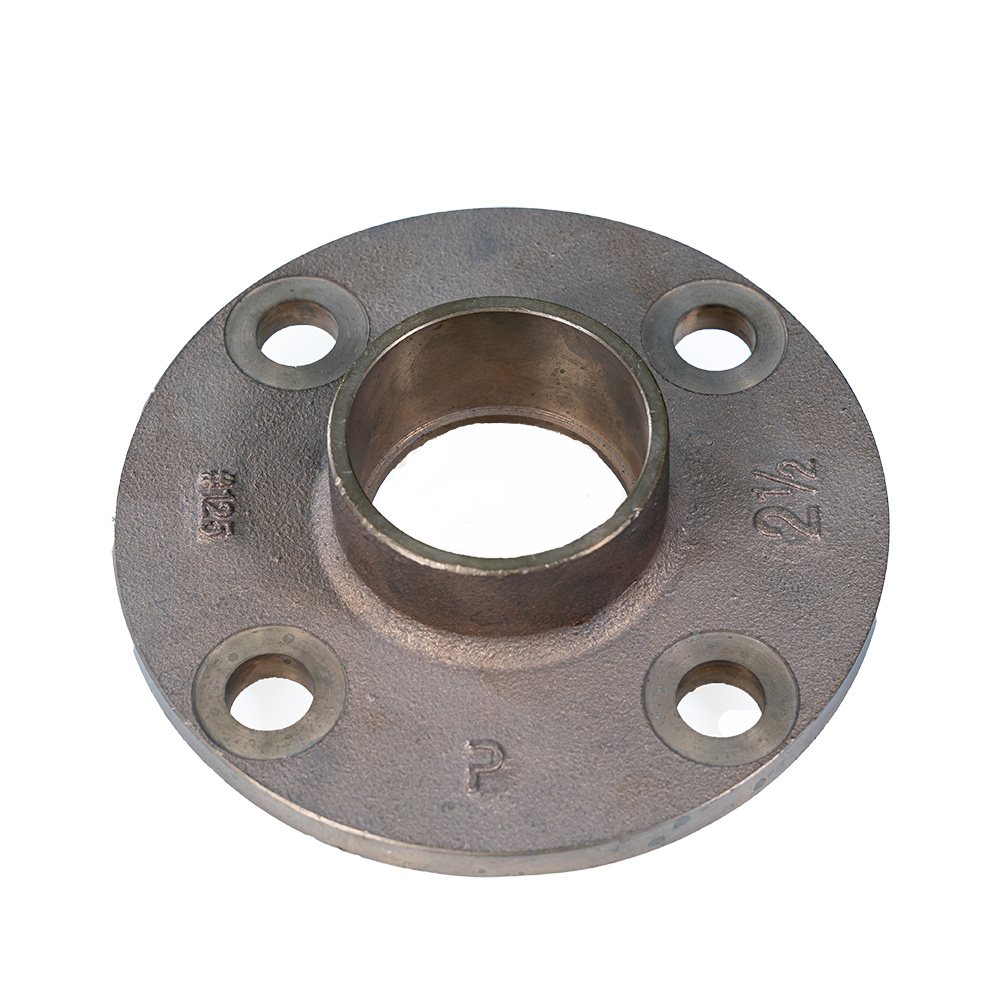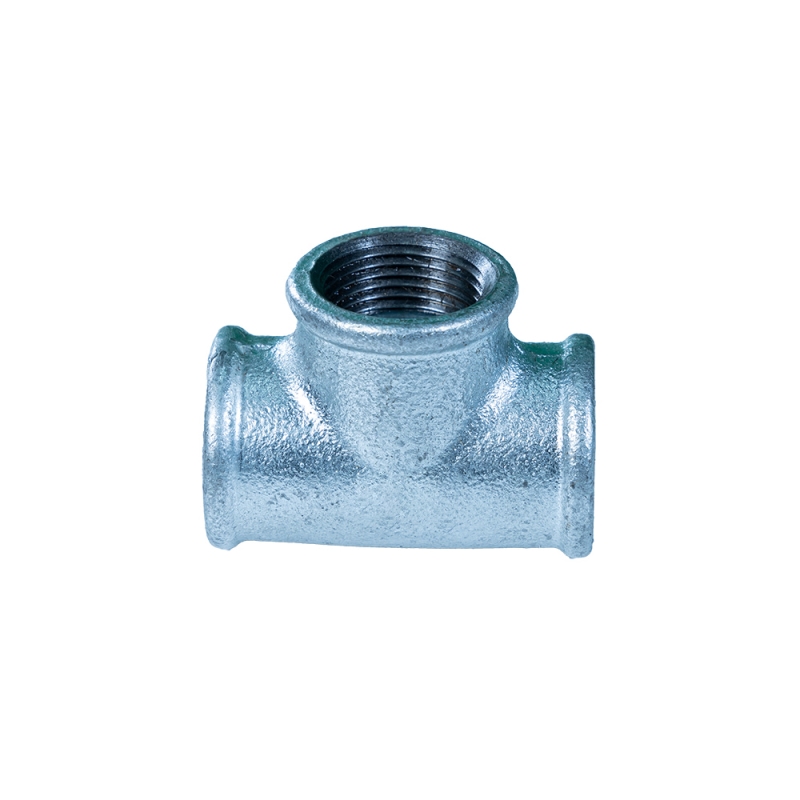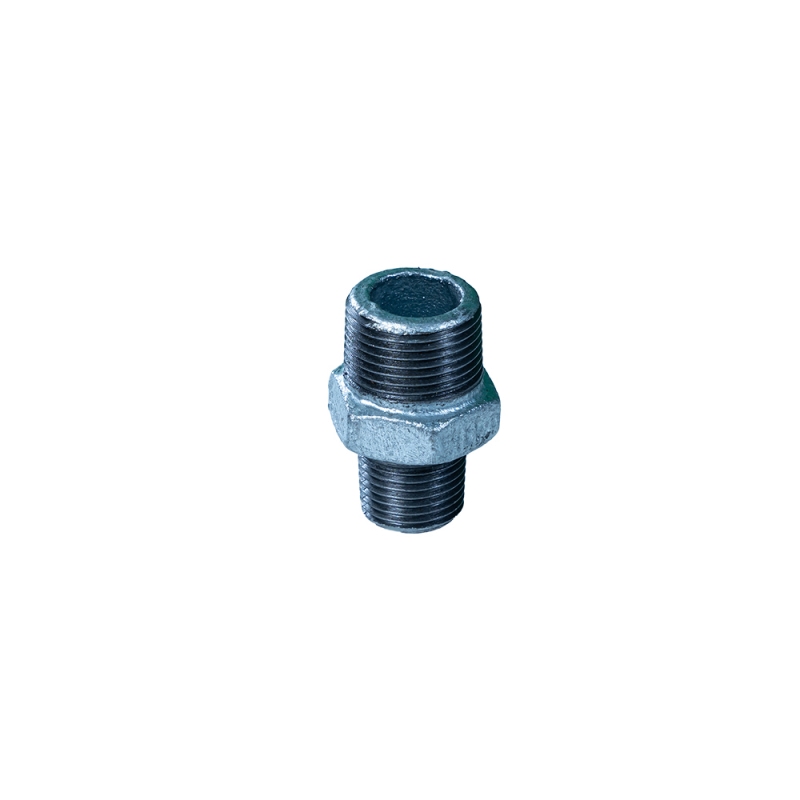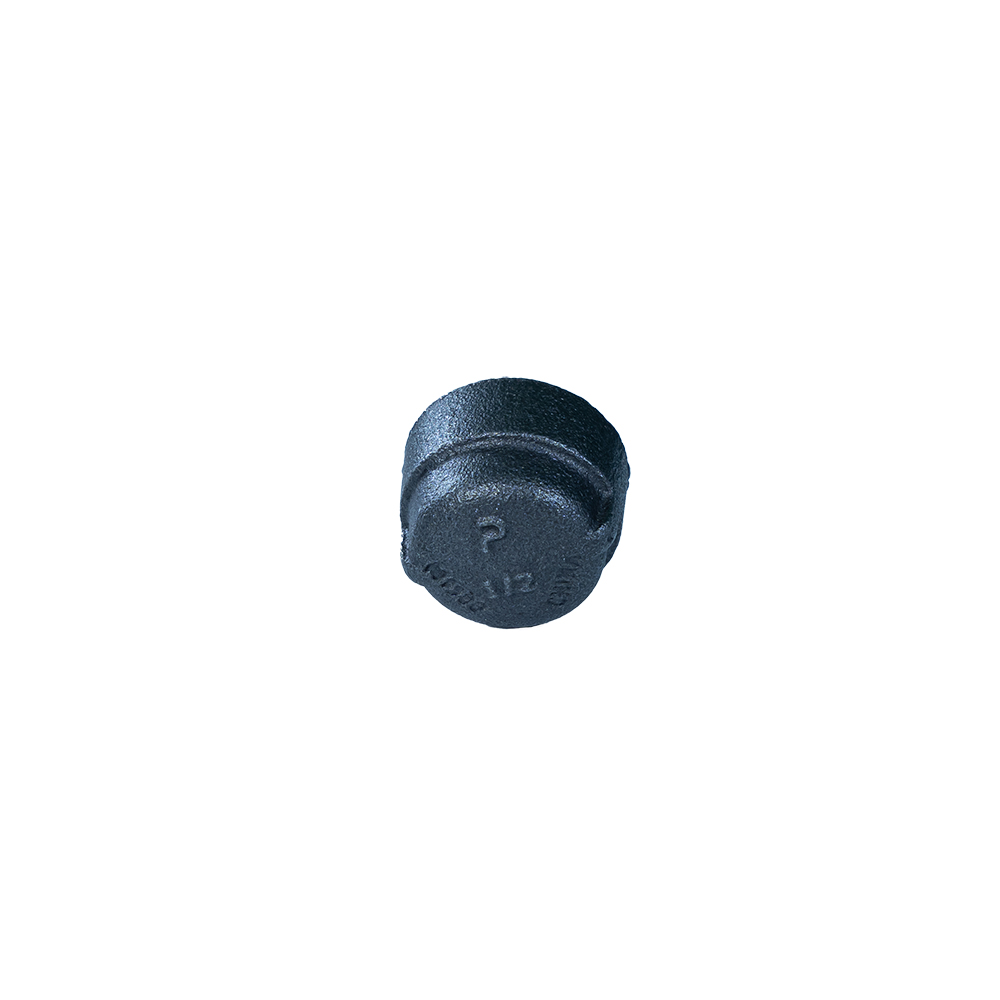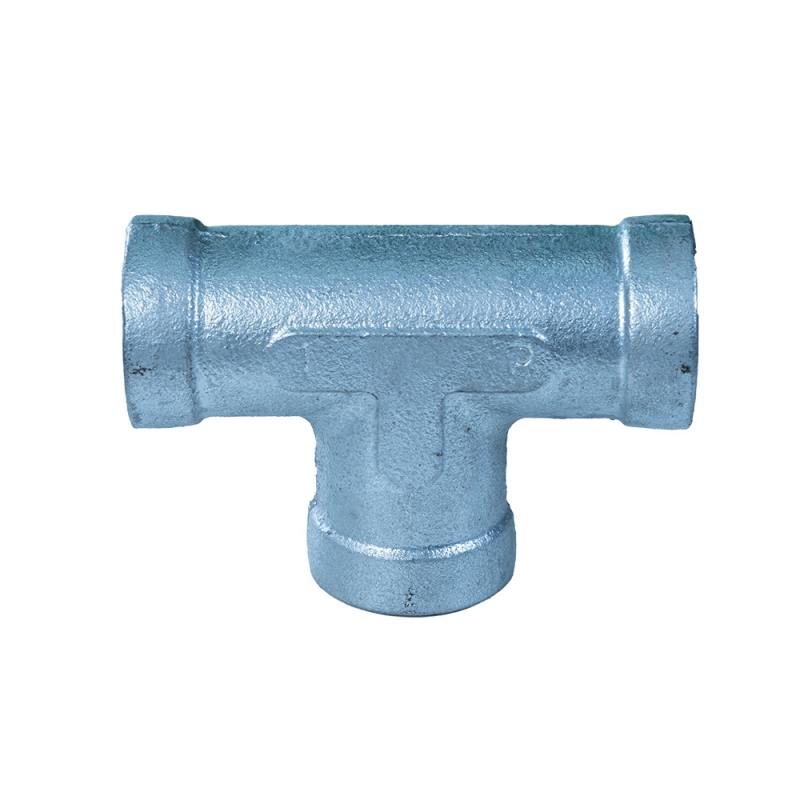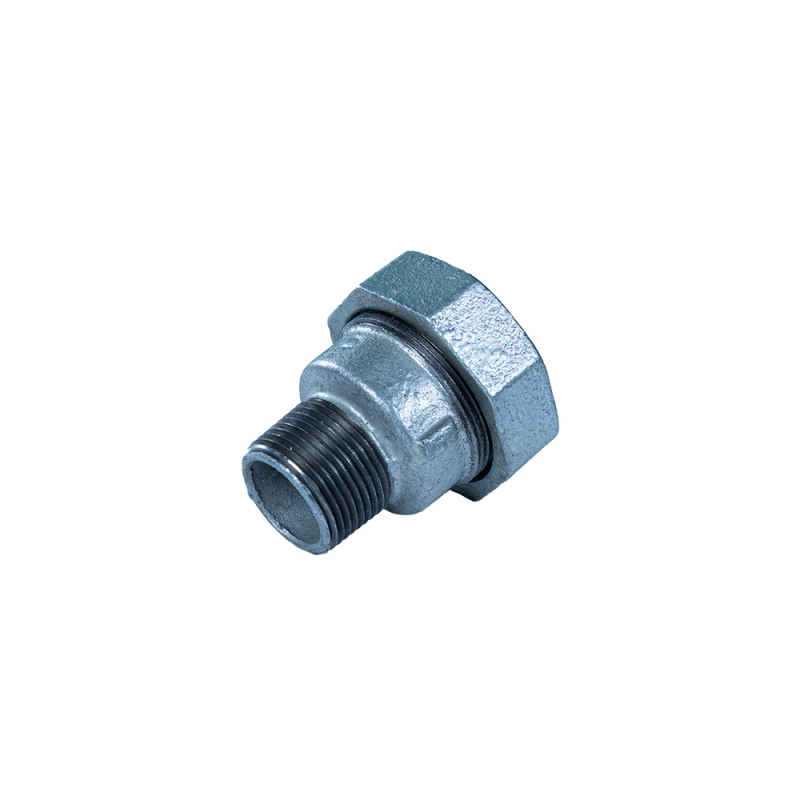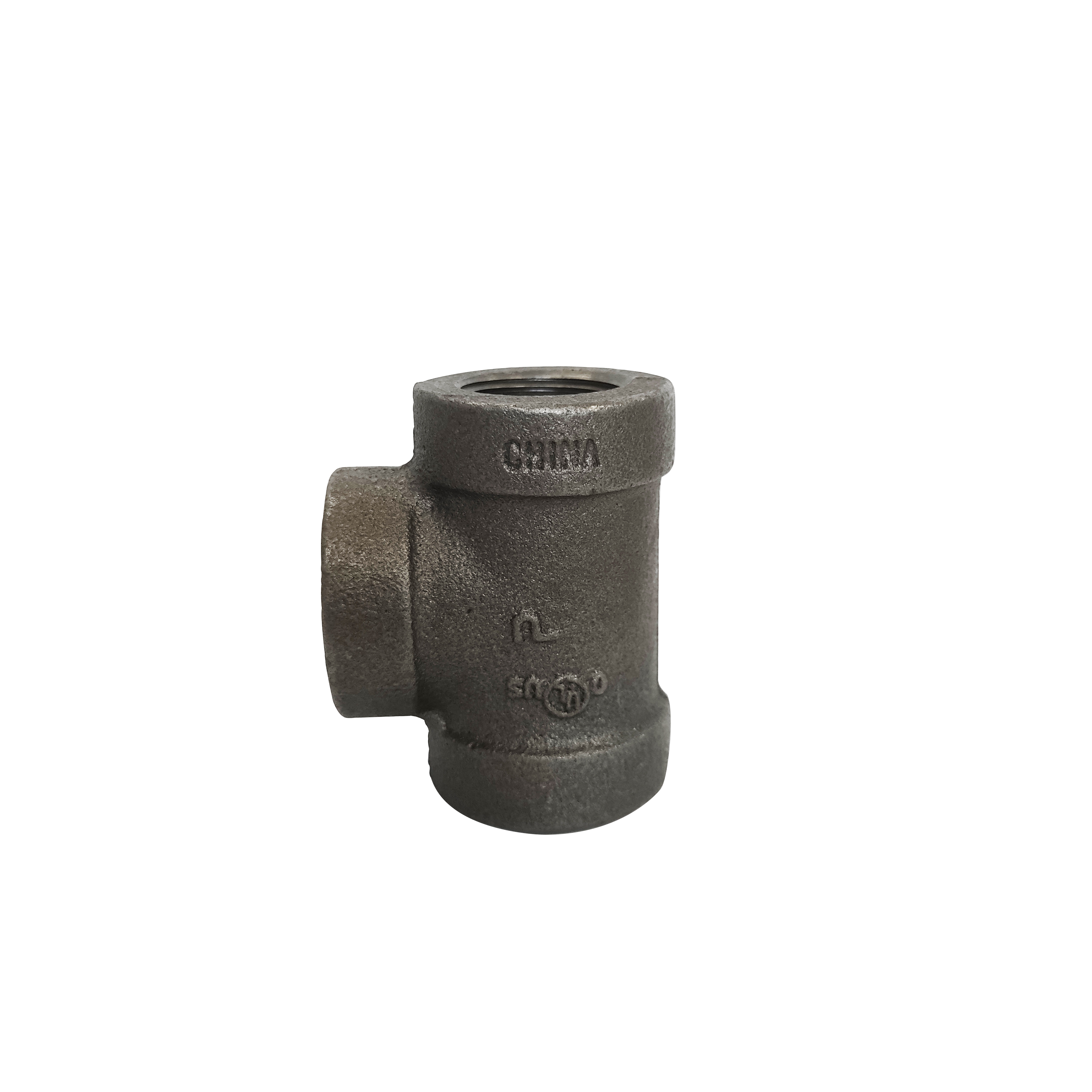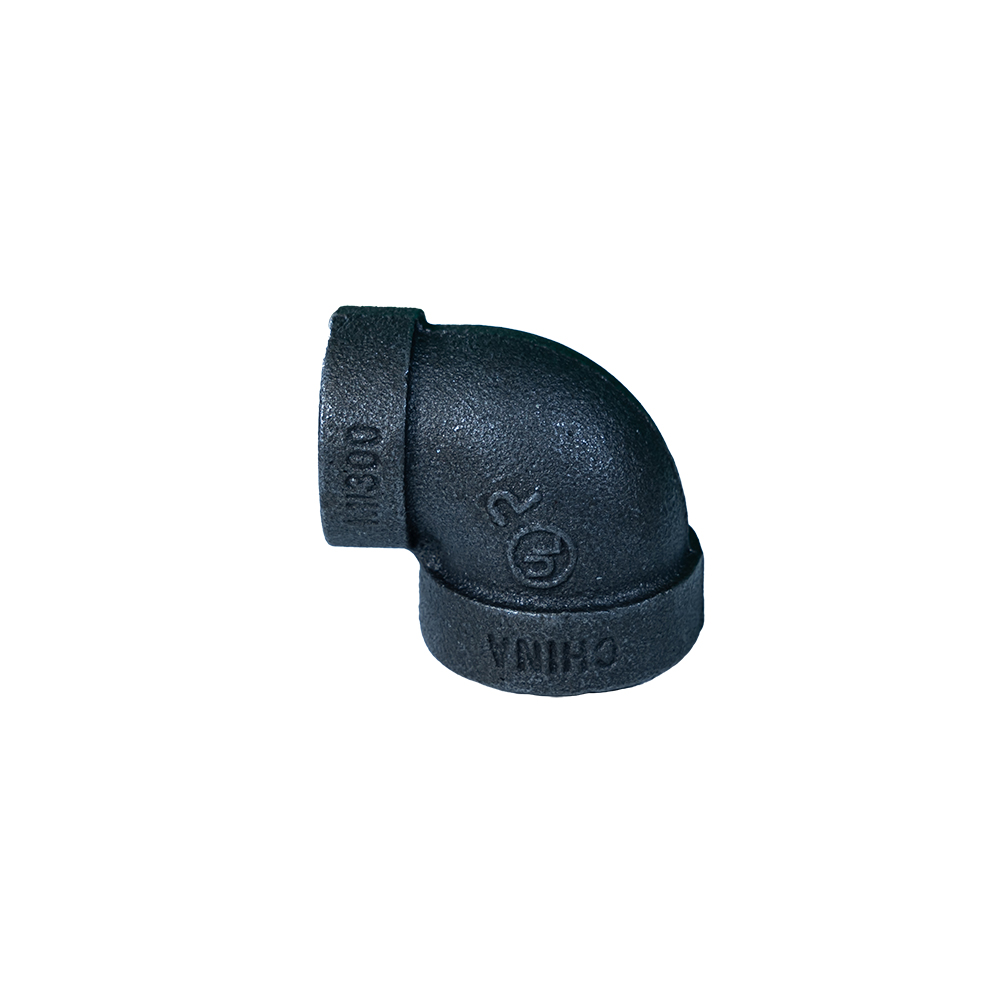Industry Trends and the Evolution of Pipeline Integrity
The modern industrial landscape demands unparalleled reliability and longevity from its infrastructure, especially within critical fluid transfer systems. As industries like petrochemicals, metallurgy, and water treatment continue to expand and face increasingly stringent environmental regulations, the need for advanced pipeline components has never been more acute. A significant trend observed across these sectors is the relentless pursuit of materials and solutions that offer superior resistance to corrosion, abrasion, and chemical degradation. This drive is fueled by the economic imperative to minimize downtime, reduce maintenance costs, and ensure operational safety over extended periods.
Historically, conventional pipe fittings, primarily bare steel, were susceptible to rapid degradation in aggressive environments, leading to frequent replacements and significant operational expenditures. The evolution in material science and engineering, particularly in polymer technology, has paved the way for innovative solutions. Today, the focus is on integrated systems where component integrity is assured from the molecular level upwards. This includes specialized coatings and robust connection methodologies designed to bridge the gap between dissimilar materials, a common challenge in complex industrial installations.
The market is witnessing a steady increase in demand for high-performance fittings, with a particular emphasis on solutions that can provide reliable plastic to steel pipe connection. This is crucial for hybrid pipeline systems that combine the cost-effectiveness and corrosion resistance of plastic pipes with the strength and structural integrity of steel pipes. These trends underscore the critical role of technologically advanced pipe fittings in enabling efficient, safe, and environmentally responsible industrial operations.
Understanding Coated Pipe Fittings: Enhancing Durability and Performance
In industrial applications, the integrity of a piping system is paramount, and its weakest links often determine its overall lifespan. This is where coated pipe fittings play a crucial role. A coated pipe fitting refers to a metallic pipe component, such as an elbow, tee, reducer, or flange, that has been uniformly covered with a protective layer of polymeric material. This coating serves as a formidable barrier against a myriad of environmental and operational stressors, significantly extending the service life of the entire pipeline system.
The primary purpose of applying these advanced coatings is to mitigate issues like internal and external corrosion, abrasion from abrasive slurries, chemical attack from corrosive media, and even biological fouling. By preventing direct contact between the base metal (typically carbon steel or stainless steel) and the aggressive process fluid or external environment, the coating drastically reduces the rate of degradation. This preventative measure is far more cost-effective than reactive maintenance or premature system replacement, contributing to a lower Total Cost of Ownership (TCO) over the operational lifecycle.
The selection of the coating material is critical and depends heavily on the specific application requirements, including temperature range, pressure, chemical exposure, and mechanical stress. Common coating materials include Fusion Bonded Epoxy (FBE), Polyethylene (PE), Polypropylene (PP), and various fluoropolymers like PTFE, each offering distinct advantages in terms of chemical resistance, abrasion resistance, and thermal stability. These coatings are not merely decorative; they are engineered solutions designed to meet rigorous industry standards and ensure reliable, long-term performance in the most demanding industrial environments.
Manufacturing Process Flow of Coated Pipe Fittings
The production of high-performance coated pipe fittings is a multi-stage, precision-engineered process designed to ensure optimal adhesion, uniformity, and durability of the protective layer. Adherence to strict quality control protocols at each stage is critical for achieving the desired performance characteristics.
1. Material Selection and Preparation:
The process begins with the careful selection of high-grade base materials, typically carbon steel (e.g., ASTM A234 WPB, ASTM A105) or stainless steel (e.g., ASTM A403 WP304/316L). These materials are chosen for their mechanical strength and compatibility with various process environments. Raw materials are cut, formed, and deburred to meet specific dimensional requirements, ensuring the foundational integrity of the fitting. Common forming methods include:
- Casting: Utilized for complex geometries where traditional forming methods are impractical. Molten metal is poured into molds, then cooled and solidified.
- Forging: Involves shaping metal under compressive forces, enhancing grain structure and mechanical properties, ideal for high-pressure applications.
- CNC Machining: Precision machining ensures exact dimensions and smooth surfaces, crucial for optimal coating adhesion and fluid flow.
2. Surface Preparation:
This is perhaps the most critical stage for coating longevity. The fitting's surface must be meticulously cleaned to ensure maximum adhesion. This typically involves:
- Degreasing: Removal of oils, greases, and other contaminants using alkaline or solvent solutions.
- Abrasive Blasting: High-pressure blasting with abrasive media (e.g., steel grit, garnet) to achieve a specified surface roughness profile (e.g., SA 2.5 or SA 3.0 according to ISO 8501-1). This creates a mechanical anchor profile for the coating.

Precision casting process, a fundamental step in producing high-quality pipe fittings.
3. Pre-heating:
After surface preparation, the fittings are pre-heated to a specific temperature range. This serves two main purposes: it drives off any residual moisture and provides the necessary thermal energy for the coating material to melt and flow evenly, ensuring optimal molecular adhesion to the metal substrate.
4. Coating Application:
The method of coating application varies depending on the type of polymer being used:
- Electrostatic Spray (for Powder Coatings like FBE, PE): Powdered polymer particles are electrostatically charged and sprayed onto the grounded, pre-heated fitting. The heat causes the powder to melt, flow, and gel, forming a continuous film.
- Fluidized Bed Coating: Fittings are dipped into a bed of finely powdered polymer, which is fluidized by an upward stream of air. The pre-heated part melts the powder upon contact, forming a smooth, uniform layer, often used for thicker coatings.
- Liquid Spray/Dip Coating: For liquid epoxy or other liquid polymer systems, applied via spray guns or by dipping, followed by a curing process.
5. Curing and Cooling:
Following application, the coated fittings undergo a controlled curing process in an oven, where the polymer fully cross-links and hardens, achieving its final mechanical and chemical properties. After curing, a controlled cooling phase prevents thermal shock and ensures the coating adheres perfectly without stress fractures.
6. Quality Control and Testing:
Rigorous testing is performed to validate the integrity and performance of the coated pipe fittings:
- Coating Thickness Measurement: Using non-destructive methods (e.g., magnetic induction) to ensure uniformity and adherence to specifications (e.g., 250-1000 microns).
- Adhesion Testing: Pull-off tests (e.g., ASTM D4541) or cross-hatch tests (ASTM D3359) to evaluate bond strength between coating and substrate.
- Holiday Detection: Electronic detectors (high-voltage spark testers) identify pinholes or discontinuities in the coating, ensuring a complete protective barrier.
- Visual Inspection: Checking for defects, bubbles, or irregularities in the coating surface.
- Dimensional Checks: Ensuring fittings meet specified tolerances.
- Hydrostatic Pressure Testing: For specific pressure ratings, verifying the structural integrity of the fitting.
These manufacturing and testing processes ensure that our coated pipe fittings comply with international standards such as ISO 9001 (Quality Management), ANSI B16.5 (Pipe Flanges and Flanged Fittings), ASTM (various material standards), and API (American Petroleum Institute) for specific oil and gas applications. The meticulous application of these coatings drastically enhances corrosion resistance, abrasion resistance, and chemical inertness, translating into an extended service life and significant energy savings by maintaining smooth internal flow paths, reducing friction losses in typical application scenarios such as large-scale water supply and drainage systems, and petrochemical transport pipelines.
Technical Specifications and Parameters of Coated Pipe Fittings
Understanding the technical specifications of coated pipe fittings is crucial for engineers and procurement specialists to ensure optimal system performance and compliance with project requirements. The parameters below represent typical high-performance specifications:
| Parameter | Specification | Relevant Standard |
|---|---|---|
| Base Material | Carbon Steel (ASTM A234 WPB, ASTM A105), Stainless Steel (ASTM A403 WP304/316L), Ductile Iron | ASTM, ASME |
| Coating Material | Fusion Bonded Epoxy (FBE), Polyethylene (PE), Polypropylene (PP), PTFE, Glass-Lined | AWWA C213, DIN 30670, ISO 21809 |
| Coating Thickness | Typically 250 - 1000 microns (0.25 - 1.0 mm), depending on material and application | ISO 2178, ASTM D7091 |
| Operating Temperature Range | -40°C to +150°C (varies by coating type, e.g., FBE up to 110°C, PTFE higher) | Manufacturer Specific, ASTM D2863 |
| Pressure Rating | ANSI Class 150 to Class 2500, PN10 to PN400 (up to 40 MPa) | ASME B16.5, ASME B16.9 |
| Adhesion Strength | Min. 10 MPa (1500 psi) for FBE, significantly higher for some PTFE bonds | ASTM D4541, ISO 4624 |
| 耐腐食性 | Excellent in acidic, alkaline, and saline environments; typically >5000 hours salt spray (ASTM B117) | ASTM B117, ISO 9227 |
| Abrasion Resistance | High (e.g., Taber Abraser: <50 mg weight loss after 1000 cycles, CS-10 wheel, 1kg load) | ASTM D4060 |
These detailed specifications highlight the engineering precision behind coated pipe fittings, enabling them to meet diverse and demanding industrial requirements. The interplay of base material, coating type, and manufacturing precision directly influences the fitting's ability to withstand harsh operating conditions and provide extended service life.
Plastic to Steel Pipe Connection: Bridging Material Gaps
The challenge of creating a reliable and durable plastic to steel pipe connection is a critical consideration in numerous industrial and municipal projects. While plastic pipes (such as HDPE, PVC, or PP) offer excellent chemical resistance, flexibility, and cost-effectiveness for certain applications, steel pipes remain indispensable for their superior mechanical strength, pressure handling capabilities, and structural integrity in others. The seamless integration of these two distinct material types requires specialized fittings engineered to overcome inherent incompatibilities.
These incompatibilities primarily arise from differences in thermal expansion coefficients, material hardness, and the potential for galvanic corrosion when dissimilar metals are in contact in an electrolyte. A properly designed plastic to steel pipe connection fitting addresses these challenges by providing a robust, leak-proof transition that ensures the long-term integrity of the hybrid pipeline system. Our solutions are designed to prevent issues such as stress cracking at the interface, material fatigue due to differential expansion, and electrochemical degradation.
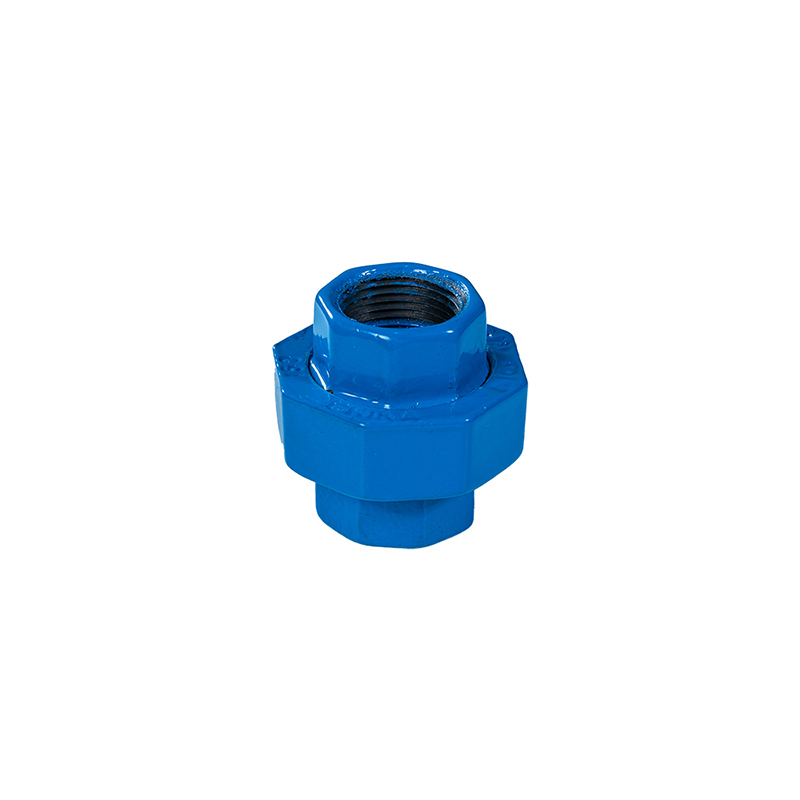
Specialized fitting ensuring a secure plastic to steel pipe connection.
Key features of our plastic to steel pipe connection solutions include:
- Advanced Bonding Technologies: Employing fusion bonding, compression fittings, or carefully engineered mechanical flanges that account for material differences.
- Corrosion Protection: The steel components of the connection are typically internally and externally coated (e.g., FBE or PE) to prevent corrosion, which is crucial where the fitting might be exposed to corrosive media or buried environments. This protects the steel from both external soil conditions and internal fluid aggression, enhancing its compatibility with the plastic pipe's inherent corrosion resistance.
- Stress Management: Designs that accommodate differential thermal expansion and contraction, preventing stress concentrations and ensuring joint integrity over fluctuating temperatures.
- Leak Prevention: Precision machining and high-quality sealing materials ensure a zero-leak connection, critical for environmental safety and operational efficiency.
- Versatility: Available in various configurations (e.g., flange adapters, spigots, couplings) to suit different pipe sizes, materials, and pressure ratings.
These specialized fittings are essential for creating durable, high-performance hybrid pipeline systems, maximizing the advantages of both plastic and steel materials while effectively mitigating their inherent weaknesses at the critical transition points. This ensures seamless fluid transfer in complex industrial setups, from water distribution to chemical processing.
Application Scenarios for Coated Pipe Fittings
The versatility and enhanced performance characteristics of coated pipe fittings make them indispensable across a wide array of demanding industrial sectors. Their ability to withstand aggressive environments extends the operational capabilities and reliability of piping systems in scenarios where conventional fittings would quickly fail.
1. Petrochemical and Oil & Gas Industries:
In upstream, midstream, and downstream operations, pipelines transport highly corrosive crude oil, refined products, natural gas, and various chemicals. Coated pipe fittings are crucial here for:
- Sour Gas/Oil Service: Protecting against hydrogen sulfide (H₂S) and carbon dioxide (CO₂) corrosion.
- Offshore Platforms: Resisting seawater corrosion and harsh marine climates.
- Refinery Applications: Handling aggressive chemicals and high temperatures.
- Buried Pipelines: Providing external protection against soil corrosion, galvanic corrosion, and microbial induced corrosion (MIC).
2. Water Supply, Wastewater Treatment, and Drainage Systems:
Municipal and industrial water infrastructure benefits immensely from the long-term protection offered by these fittings:
- Potable Water Networks: Ensuring water quality by preventing metallic leaching and maintaining a smooth internal surface, which reduces biofilm formation and energy consumption for pumping.
- Sewage and Effluent Lines: Resisting corrosive wastewater chemicals and biological attack.
- Desalination Plants: Withstanding highly saline and corrosive environments.
3. Mining and Mineral Processing:
Slurry pipelines in mining operations are notorious for severe abrasion and chemical corrosion. Coated pipe fittings, especially those with high-build abrasion-resistant coatings (e.g., thick PE or specialized epoxy), are vital for:
- Tailings Transport: Handling abrasive mineral slurries over long distances.
- Chemical Processing: Resisting acidic or alkaline reagents used in extraction.
4. Power Generation:
Both conventional and renewable energy plants utilize fittings for cooling water, fuel lines, and waste disposal:
- Cooling Water Systems: Preventing corrosion and biofouling in large diameter pipes.
- Flue Gas Desulfurization (FGD) Systems: Handling corrosive exhaust gases and slurries.
5. Chemical Processing Plants:
For handling a diverse range of corrosive acids, bases, and solvents at varying temperatures and pressures, fittings with highly chemical-resistant coatings (e.g., PTFE, specialized epoxies) are critical to ensure process safety and prevent leakage.
In all these scenarios, the integration of plastic to steel pipe connection fittings further enhances system adaptability and cost-effectiveness, allowing engineers to selectively apply the most suitable material for each pipeline segment while maintaining a unified, reliable connection point. This strategic use of coated fittings contributes significantly to energy saving through reduced friction, prolonged asset life, and minimized environmental impact.
Technical Advantages of Advanced Coated Pipe Fittings
The adoption of advanced coated pipe fittings offers a compelling array of technical and operational advantages that directly translate into enhanced system performance, reduced operational costs, and improved safety profiles for industrial infrastructure. These benefits are particularly pronounced in challenging environments where conventional materials struggle.
1. Superior Corrosion Resistance:
This is the foremost advantage. The polymeric coating creates an impenetrable barrier against both internal corrosive media and external environmental factors (soil chemistry, atmospheric exposure, saltwater). This prevents electrochemical reactions that lead to metal degradation, pitting, and general corrosion, significantly extending the life of the asset. For example, FBE coatings are proven to offer excellent resistance against various acids, alkalis, and salts.
2. Enhanced Abrasion Resistance:
In applications involving the transport of abrasive slurries (e.g., mining, dredging), internal pipe surfaces are subjected to severe wear. Coatings such as high-density polyethylene (HDPE) or specific epoxy formulations provide a resilient surface that resists the erosive action of suspended solids, drastically extending the service life of pipelines compared to uncoated steel.
3. Chemical Inertness:
Certain coatings, particularly PTFE or specialized chemical-resistant epoxies, exhibit remarkable inertness to a broad spectrum of aggressive chemicals. This makes coated pipe fittings indispensable in chemical processing plants where contact with strong acids, bases, or solvents would rapidly compromise unprotected metallic components.
4. Reduced Friction and Energy Saving:
The smooth, non-porous surface of polymer coatings significantly reduces the coefficient of friction compared to rough or corroded bare metal surfaces. This translates directly into lower pressure drops across the piping system, requiring less energy for pumping fluids. Studies have shown that a smooth internal coating can reduce pumping energy consumption by 10-20% over the lifespan of the pipeline, providing substantial long-term energy saving and operational cost benefits.
5. Prevention of Scaling and Biofouling:
The smooth surface of coated pipes also inhibits the adhesion of scale-forming minerals and the growth of biofilms (biofouling), which can restrict flow, reduce heat transfer efficiency, and harbor harmful bacteria. This is particularly beneficial in water treatment and food processing industries.
6. Extended Service Life and Reduced Maintenance:
By providing comprehensive protection, these fittings dramatically extend the operational lifespan of the pipeline system, often by several decades, far surpassing that of uncoated alternatives. This leads to a significant reduction in inspection, repair, and replacement cycles, lowering maintenance expenditures and minimizing costly downtime.
7. Environmental Compliance and Safety:
By preventing leaks and ruptures caused by corrosion, coated pipe fittings enhance environmental protection by preventing contamination and ensuring process fluids remain contained. This also contributes to a safer working environment by reducing the risk of hazardous material releases.
These multifaceted advantages underscore why coated pipe fittings are increasingly becoming the standard choice for engineers designing robust, efficient, and sustainable industrial piping solutions. They represent a strategic investment in long-term asset integrity and operational excellence.
Vendor Comparison: Selecting the Right Partner for Coated Pipe Fittings
Choosing the right vendor for coated pipe fittings is a strategic decision that impacts project timelines, long-term operational costs, and system reliability. Beyond basic product availability, discerning clients evaluate vendors based on a spectrum of factors including manufacturing capabilities, quality assurance, technical support, and customization flexibility. A robust comparison helps in identifying partners who offer not just products, but comprehensive solutions.
| Feature/Criterion | Pannext Fittings (Example) | Competitor A (General Market) | Competitor B (Niche Player) |
|---|---|---|---|
| Coating Technology Range | FBE, 3LPE/3LPP, Internal/External Epoxy, PTFE/PVDF Lining, Glass-lined | Limited to FBE & basic PE | Specialized in one or two coating types |
| Manufacturing Standards | ISO 9001, API, ASTM, ASME, AWWA; full traceability | Basic ISO compliance, limited industry-specific certs | Compliance for niche applications only |
| Customization Capability | Extensive (materials, dimensions, coating types, small batch) | Limited to standard sizes and common materials | Custom for specific niche, but not broad range |
| Quality Control & Testing | 100% Holiday Detection, Adhesion, Thickness, Hydrostatic, NDT | Sample-based testing, basic visual inspection | Rigorous within niche, less across range |
| Technical Support & R&D | Dedicated engineering team, material science expertise, ongoing R&D | Basic product support, limited engineering assistance | Strong R&D for their niche products |
| Project Experience | Global track record in diverse sectors (petrochemical, water, mining) | Regional projects, limited complex applications | Strong in a specific geographic or application area |
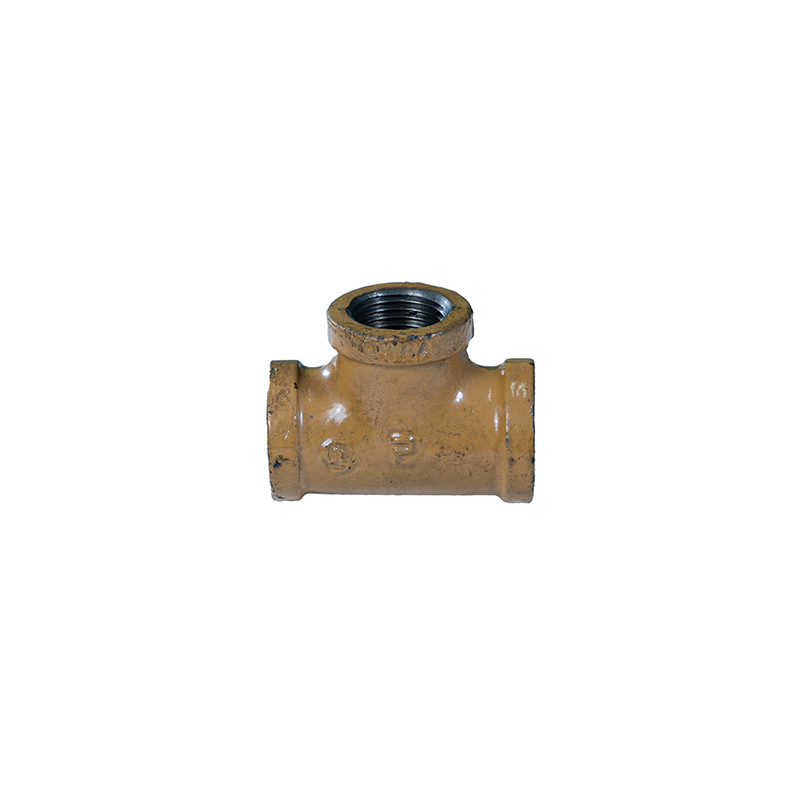
Advanced manufacturing lines ensure consistent quality for all coated pipe fittings.
This comparison illustrates that a comprehensive vendor, like Pannext Fittings, distinguishes itself through a broader range of coating technologies, adherence to a wider array of international standards, robust customization options, and superior technical backing. These differentiators are crucial for projects that demand high reliability and tailored solutions, especially when dealing with complex requirements like plastic to steel pipe connection points.
Customized Solutions for Unique Industrial Demands
In the realm of B2B industrial piping, off-the-shelf solutions often fall short of addressing the unique complexities and stringent requirements of specific projects. Recognizing this, leading manufacturers of coated pipe fittings offer extensive customization capabilities. These bespoke solutions are designed to precisely match application-specific parameters, ensuring optimal performance, extended lifespan, and seamless integration into existing or new infrastructure.
Our approach to customized solutions involves a collaborative process, starting with in-depth consultation and engineering analysis. This ensures that every aspect, from material selection to coating application and final testing, is tailored to the client's exact specifications. Key areas of customization include:
- Material Grades: Beyond standard carbon and stainless steels, we can source and process specialized alloys (e.g., Duplex, Super Duplex, Inconel) for extreme corrosive or high-temperature environments.
- Custom Geometries and Dimensions: Manufacturing fittings with non-standard angles, lengths, diameters, or unique branching configurations to fit precise space constraints or flow requirements. This often involves advanced casting or fabrication techniques.
- Specific Coating Systems: Applying multi-layer coating systems (e.g., primer, intermediate, topcoat) or specialized polymers (e.g., PVDF, ECTFE) to provide enhanced resistance against a particular chemical, temperature profile, or abrasive medium that standard coatings cannot handle. This extends to solutions for plastic to steel pipe connection points requiring specific transition materials.
- Pressure and Temperature Ratings: Designing and manufacturing fittings to exceed standard pressure classes or withstand extreme cryogenic or high-heat conditions, complete with appropriate material and coating selections.
- Internal Surface Finish: Achieving ultra-smooth internal finishes to minimize friction, reduce pumping costs, or prevent microbial adhesion in hygienic applications.
- Specialized Testing and Certifications: Conducting project-specific tests (e.g., accelerated aging, specific chemical immersion tests, third-party verification) and providing certifications beyond standard industry requirements to meet stringent client or regulatory demands.
- Small Batch Production: Catering to projects that require a limited number of highly specialized fittings, ensuring that even small quantities receive the same meticulous engineering and quality control as large orders.
Our commitment to customized solutions ensures that clients receive not just a product, but a precision-engineered component that integrates flawlessly into their operations, delivering optimal performance and unparalleled reliability throughout its service life.
Application Case Studies: Proving Performance in Practice
Real-world applications best demonstrate the efficacy and reliability of coated pipe fittings and specialized plastic to steel pipe connection solutions. Our extensive experience across diverse industrial sectors has yielded numerous successful project outcomes, highlighting our capability to deliver durable and high-performance solutions.
Case Study 1: Potable Water Distribution Network Upgrade
Client: Major Municipal Water Authority, Southeast Asia
Challenge: An aging cast iron pipe network suffered from severe internal corrosion, tuberculation, and frequent leaks, leading to significant water loss, reduced flow capacity, and compromised water quality. The authority needed a cost-effective solution with a minimal service interruption.
Solution: We supplied a comprehensive package of internally and externally FBE-coated ductile iron fittings, including bends, tees, and reducers, designed for potable water applications (AWWA C213 compliant). These fittings offered superior corrosion protection and a smooth internal surface. For transition points connecting to existing HDPE segments, our specialized plastic to steel pipe connection flange adapters were utilized.
Outcome: The project resulted in a 35% reduction in non-revenue water within the upgraded sections in the first year alone. Flow capacity improved by an average of 20%, leading to optimized pumping schedules and an estimated 15% energy saving. The FBE-coated fittings are projected to extend the network's service life by over 50 years, significantly reducing future maintenance costs. The client praised the seamless integration and the immediate improvement in water quality, stating, "Pannext Fittings delivered not just products, but a sustainable solution that transformed our network's integrity and efficiency."
Case Study 2: Chemical Effluent Disposal Line in a Petrochemical Plant
Client: Global Petrochemical Corporation, Middle East
Challenge: A critical effluent disposal line carrying highly corrosive acidic wastewater to a treatment facility experienced frequent failures due to chemical attack on standard carbon steel fittings, leading to environmental risks and operational downtime. High temperatures (up to 90°C) exacerbated the corrosion.
Solution: We engineered and supplied custom-fabricated stainless steel (316L) fittings, internally coated with a multi-layer, high-performance chemically resistant epoxy, designed to withstand the specific pH and temperature profile of the effluent. For sections interfacing with existing HDPE neutralization tanks, specialized plastic to steel pipe connection spigot adapters with integral chemical-resistant coatings were provided.
Outcome: After two years of operation, the client reported zero failures or leaks from the supplied fittings, a stark contrast to the previous quarterly failures. The coating system maintained its integrity under continuous exposure, ensuring environmental compliance and operational continuity. The client commented, "The customized coated fittings from Pannext proved to be a robust solution, effectively neutralizing a persistent corrosion problem and significantly enhancing our plant's safety record."
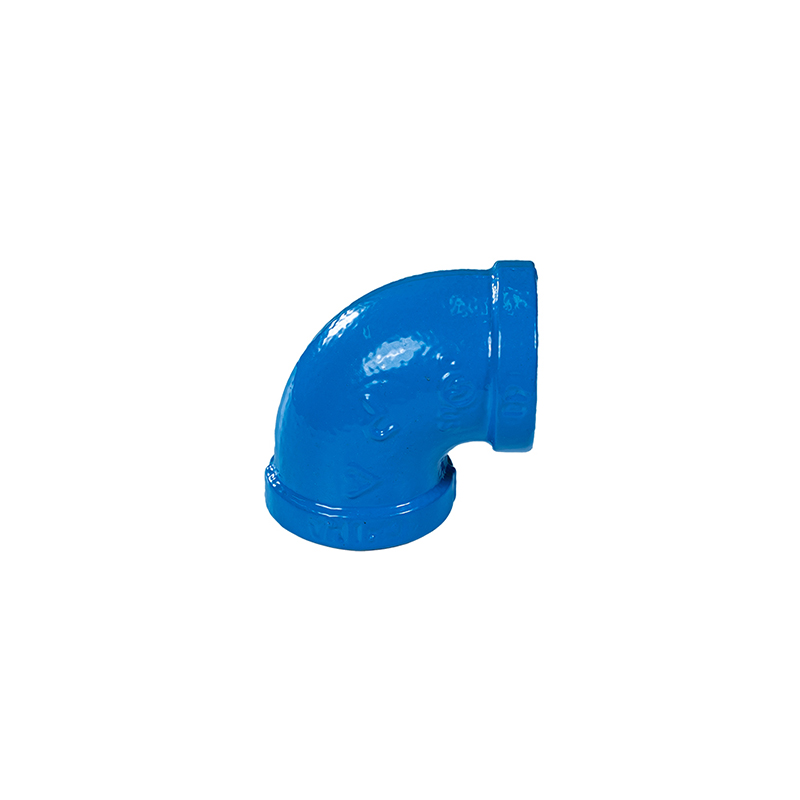
Quality assurance checks are performed at every stage to guarantee product reliability.
Case Study 3: Mining Slurry Pipeline Expansion in Australia
Client: Large-scale Iron Ore Mining Company, Western Australia
Challenge: An expansion of their iron ore slurry pipeline faced severe internal abrasion issues, leading to premature wear of standard steel bends and valves, requiring frequent and costly replacements in remote locations. The client sought fittings with extreme abrasion resistance.
Solution: We provided heavy-duty carbon steel fittings (elbows, reducers) with a thick, internal layer of highly abrasion-resistant polyethylene (PE) coating, applied via a fluidized bed process to ensure maximum thickness and uniformity. These specialized coated pipe fittings were engineered for the specific particle size and velocity of the iron ore slurry.
Outcome: The PE-coated fittings demonstrated exceptional resilience, extending the service life of critical bends by more than three times compared to the previous uncoated components. This resulted in a significant reduction in maintenance frequency, fewer emergency shutdowns, and substantial savings in replacement costs and labor, particularly beneficial in a remote operational context. The mining client lauded the solution, stating, "The performance of these coated fittings has been outstanding, allowing us to maintain continuous operation and dramatically improve the efficiency of our slurry transport system."
These cases exemplify our commitment to delivering high-quality, application-specific solutions that stand the test of time and severe operating conditions, contributing directly to our clients' operational success and profitability.
Ensuring Trustworthiness: FAQ, Lead Time, Warranty, and Support
At Pannext Fittings, we understand that trust is built on transparency, reliability, and robust support. Our commitment extends beyond delivering high-quality pipe fittings; it encompasses comprehensive customer care, clear operational policies, and unwavering accountability. This section addresses common inquiries and outlines our service guarantees.
Frequently Asked Questions (FAQ):
- Q1: What is the typical service life of your coated pipe fittings?
- A1: While actual service life depends on operating conditions and coating type, our high-quality coatings are engineered to provide an extended lifespan of 30-50 years, significantly exceeding that of uncoated alternatives under similar conditions.
- Q2: How do your plastic to steel pipe connection fittings prevent galvanic corrosion?
- A2: Our specialized fittings employ electrically insulating layers and non-conductive materials at the interface between plastic and steel. Additionally, the steel components are often coated to provide a dielectric barrier, effectively isolating the dissimilar metals and preventing electron flow, which is the root cause of galvanic corrosion.
- Q3: What international standards do your products comply with?
- A3: Our products comply with a broad range of international standards, including but not limited to ISO 9001 (Quality Management), ASME B16.5 / B16.9 (Dimensions), ASTM (Material Specifications), AWWA C213 (FBE for Water Pipelines), DIN, and relevant API specifications for oil & gas applications. All certifications are available upon request.
- Q4: Can these fittings be used in buried or underground applications?
- A4: Absolutely. A significant portion of our coated pipe fittings, particularly those with FBE or 3LPE/3LPP coatings, are specifically designed and tested for underground and submerged applications, offering excellent resistance to soil stress, microbial activity, and moisture ingress.
- Q5: What is the lead time for custom orders?
- A5: Lead times vary based on complexity and order volume. For standard coated fittings, typical lead times are 4-6 weeks. Custom-engineered solutions may range from 8-12 weeks, contingent on material sourcing and specific manufacturing processes. We provide clear, project-specific timelines at the quotation stage.
Lead Time and Fulfillment:
We operate with streamlined production and logistics processes to ensure timely delivery. Standard products are typically shipped within 4-6 weeks of order confirmation. For custom or large-volume orders, detailed production schedules are provided and rigorously adhered to. Our global logistics network facilitates efficient and reliable delivery to international destinations, with comprehensive tracking and communication throughout the fulfillment process.
Warranty Commitments:
Pannext Fittings stands behind the quality and performance of our products. All coated pipe fittings そして plastic to steel pipe connection solutions are covered by a comprehensive warranty against manufacturing defects and material failures under normal operating conditions. Our standard warranty period is 5 to 10 years, depending on the product line and application, providing peace of mind and assurance in your investment. Specific warranty details are provided with each product quotation and sales agreement.
Customer Support and After-Sales Service:
Our commitment to our clients extends far beyond the point of sale. We offer dedicated technical support, accessible through various channels, to assist with product selection, installation guidance, and troubleshooting. Our experienced engineering team is available for consultation, site visits (if required), and post-installation support. We believe in fostering long-term partnerships, ensuring that our clients receive continuous support and expertise for the entire lifecycle of their projects.
Authoritative References
- NACE International. "NACE SP0188-2017 – Discontinuity (Holiday) Testing of New Protective Coatings on Conductive Substrates." NACE International, 2017.
- American Water Works Association (AWWA). "AWWA C213 – Standard for Fusion-Bonded Epoxy Coatings for the Interior and Exterior of Steel Water Pipes and Fittings." AWWA, 2017.
- American Society for Testing and Materials (ASTM). "ASTM D4541 – Standard Test Method for Pull-Off Strength of Coatings Using Portable Adhesion Testers." ASTM International, 2017.
- ISO 21809-1:2018. "Petroleum, petrochemical and natural gas industries — External coatings for buried or submerged pipelines used in pipeline transportation systems — Part 1: Polyolefin coatings (3-layer PE and 3-layer PP)." International Organization for Standardization, 2018.
- Parker, R. S., & Taylor, S. C. "Corrosion Control for Pipelines." Woodhead Publishing, 2008.
Post time: 8月-28-2025


